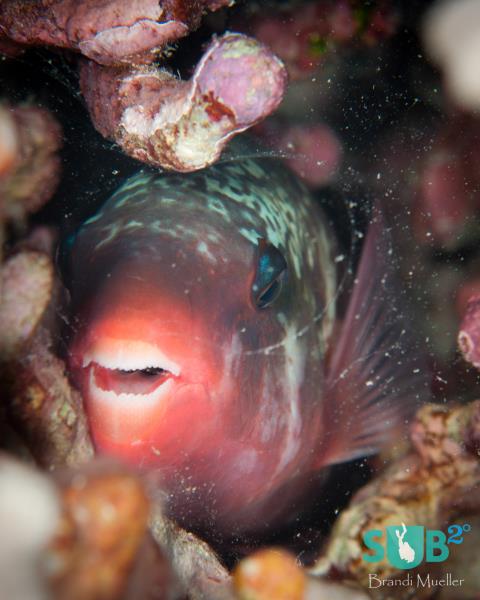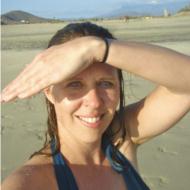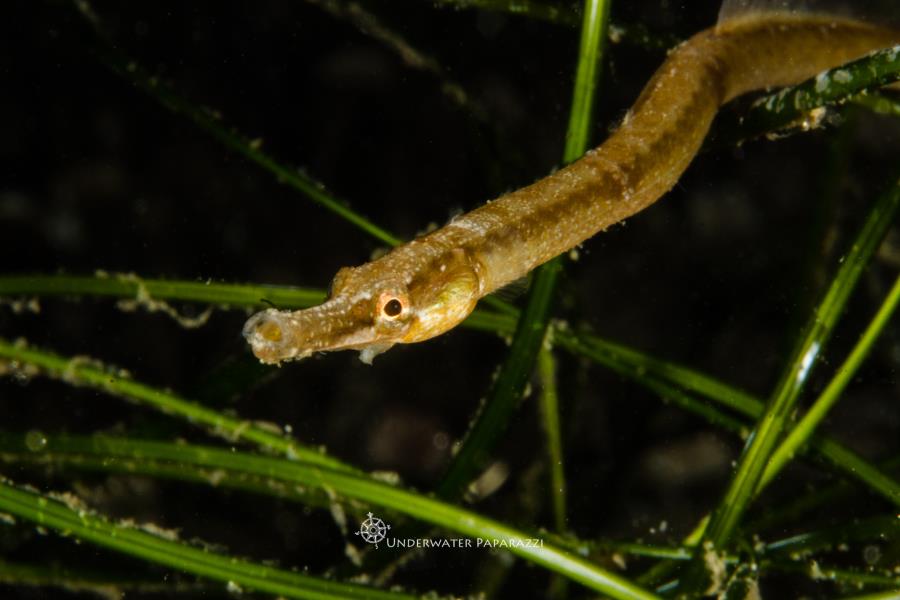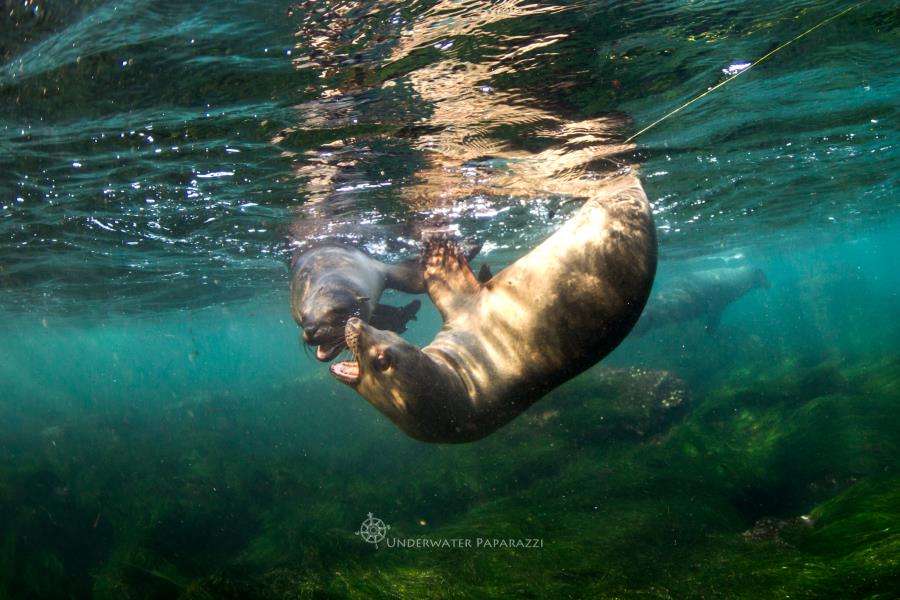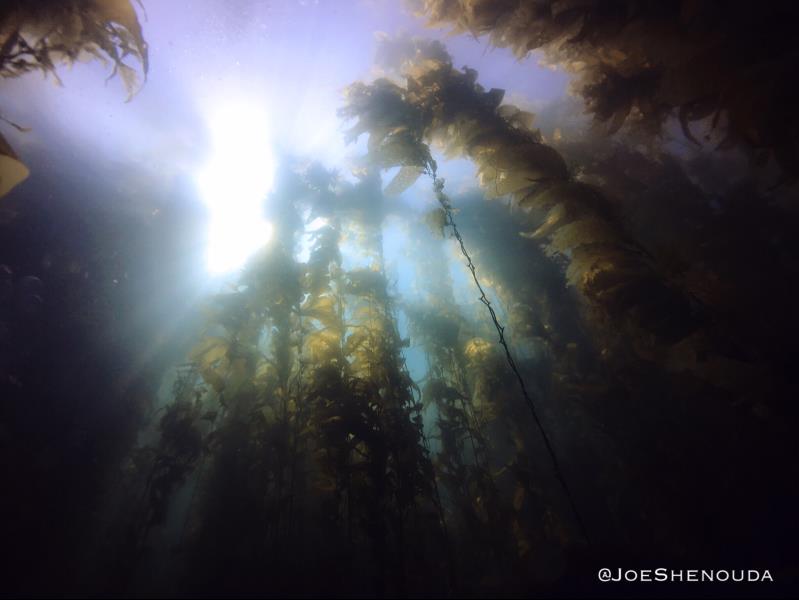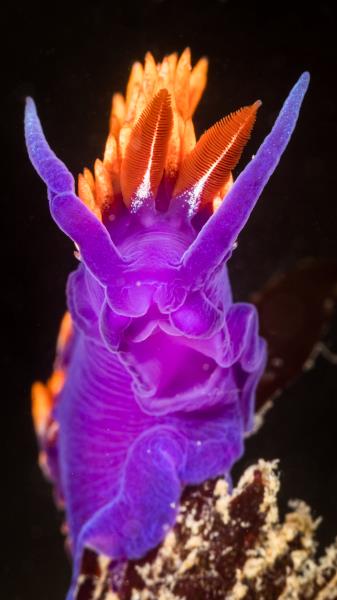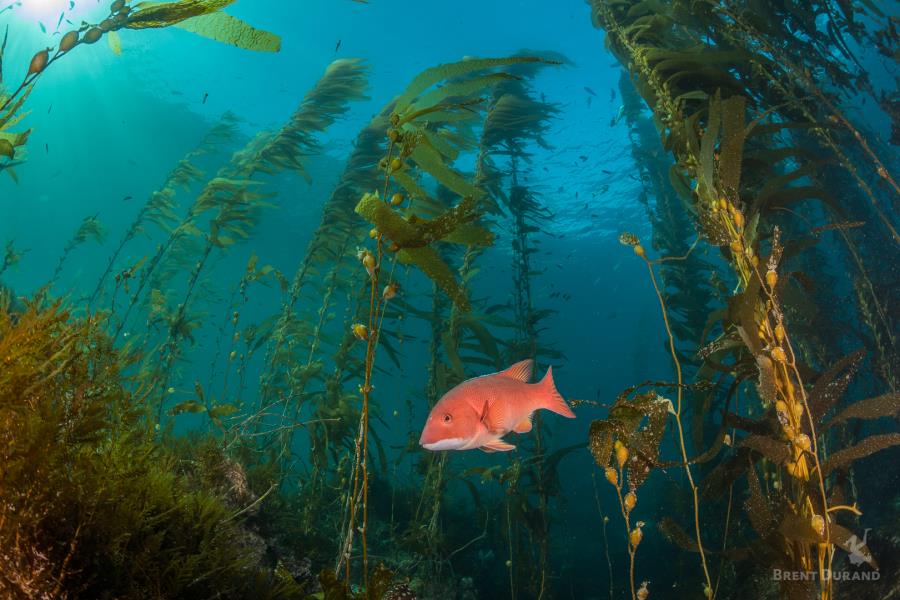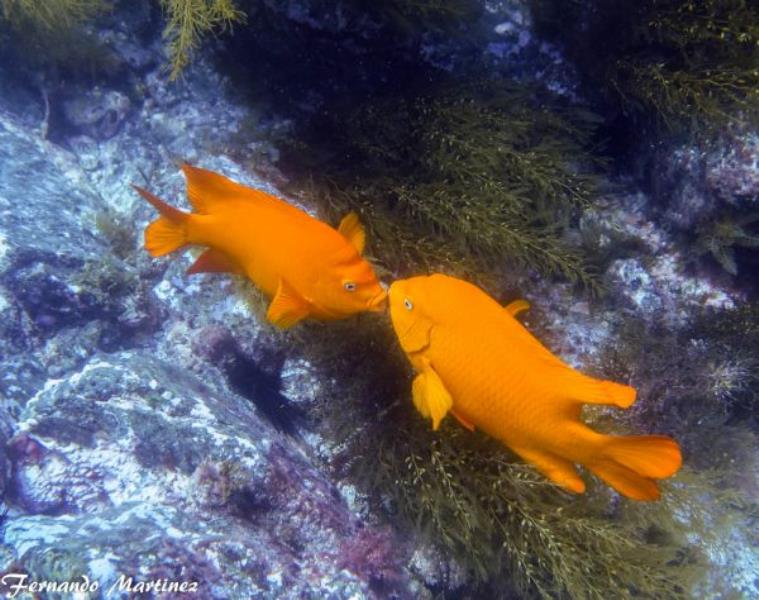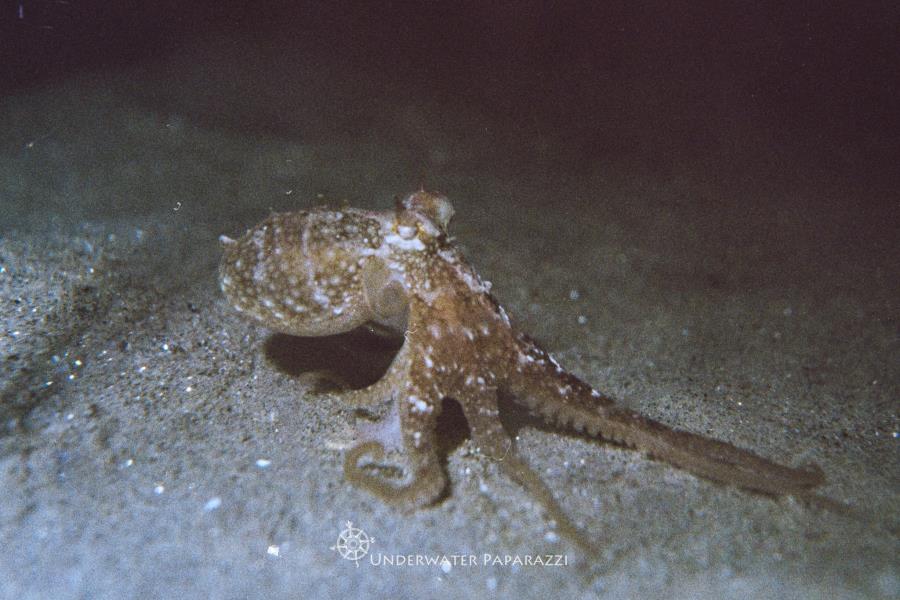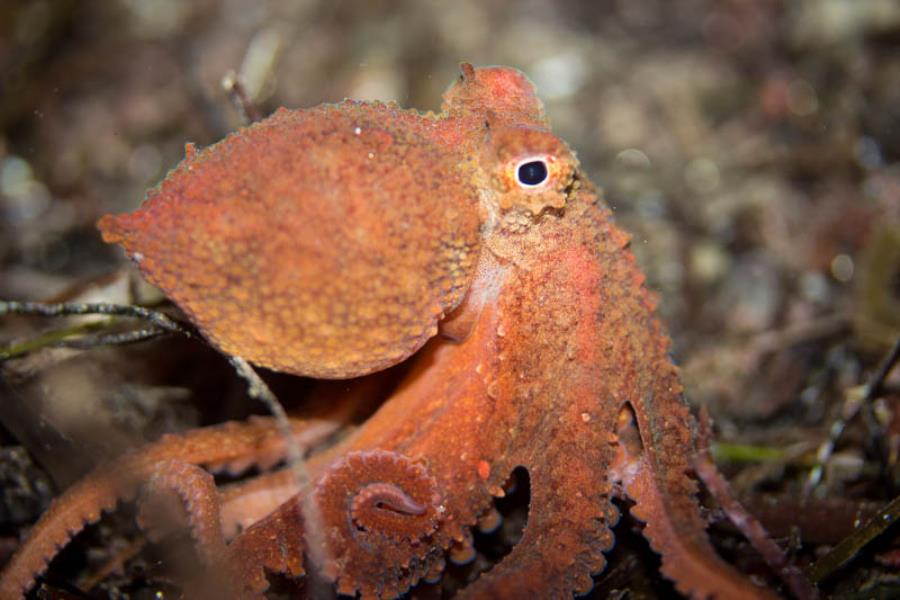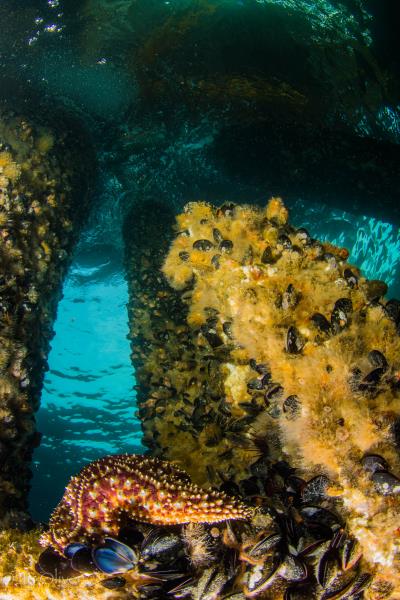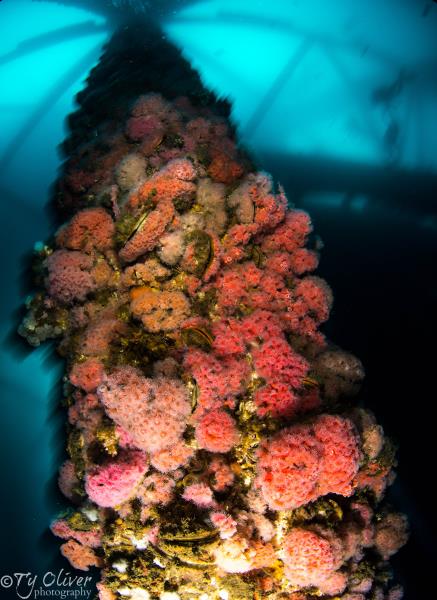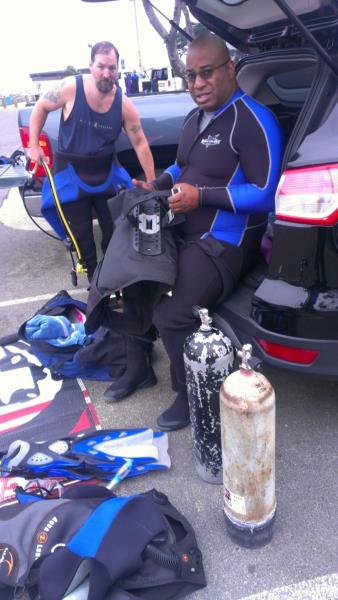 Directory of 258 Dive Sites or Spots for Scuba Diving in Southern California Coast, United States
Directory of 258 Dive Sites or Spots for Scuba Diving in Southern California Coast, United States
Part 2: Dive Sites, Marine Life & Environment in Southern California Coast, (United States)
For most, Southern California diving conjures up images of huge, swaying underwater kelp with darting sea lions and the ever present thought of their predators lurching beyond the next tangle of fronds. The Giant kelp is not the only kelp species in the area but it is the most distinct. Growing from its holdfast rooted in the seabed, the largest of all algae extends up to 120 feet to reach the water's surface. Images of sharks cruising around in the kelp beds are notorious but the reality is that you are much more likely to see gentle, and small, horn shark rather than anything deadly or dangerous. The occasional lucky encounter with a blue shark usually ends quickly due to their skid-dish, shy nature around humans. California sheephead and blue rockfish frequent the kelp forests as well as sea urchins and red abalone. The serious danger to divers is the floating canopy of kelp blades that can entangle and panic inexperienced, ill prepared divers. There are specific safety precautions and special dive certifications designed around diving in the kelp forests.
Southern California's Channel Islands are an isolated ecosystem hosting unique species in and out of the water. The area known as the Santa Barbara Channel is famous for migratory whale siting of blue, humpback, fin and other large whales. Divers off the islands find themselves in giant kelp and the land of the sea lions and harbor seals. The area is inhabited by bat rays, blue shark and California moray eels. The islands are also the launching point for amazing scuba diving sites. Wilson Rock 2.2 miles off the northern most island of San Miguel is an underwater mountain whose tip juts out of the water just 20 feet. The dive site follows the submerged rock as it plateaus off several times giving a great dive depth of 35-65 feet to explore the many rock pinnacles and ledges. The ledges are covered with dense life and an invertebrate heaven. The area is famous for the huge anemones such as the flowing snow white tentacled Metridium anemone that can grow up to a meter as well as the cobalt blue sponge prevalent along the rock reefs. The Wilson Rock dive site is for experienced divers due to swift currents and strong surge, steep deep drop offs and extreme changes in visibility.
Water temperatures along the Channel Islands vary, the southern islands can be 10-15 degrees F warmer than the waters along the northern islands. In general, southern California's Pacific waters range from 50-60 degrees F in the winter months up to 60-70 degree F in the summer. The Pacific is much chillier than the Atlantic, Gulf of Mexico or Caribbean like waters off the Florida Keys. Most divers in California don a wet suit or dry suit for warmth. Visibility in the Pacific is also not as exceptionally clear as the warmer, calmer waters of Florida for example. Pacific visibility however can sometimes be exceptionally clear with visibility at 150 feet, however the average visibility in this region of the Pacific is between 40-90 feet.
A warm southern current sweeps over Anacapa Island, a small Channel Island in the more southern reaches of the northern Channel Islands. The warmer temperatures make this a more pleasant dive than the colder more extreme dives off the far northern Channel Islands. Anacapa is a common place for those getting their underwater certification from local dive shops. The island is famous for its thick swaying kelp, leopard sharks and Garibaldis, the state fish of California that looks like a giant goldfish. The furthest Channel Island to the south is San Clemente Island offering protected shear cliffs over run with coral, anemones and sponges. Famous for its clear, relatively warmer waters, San Clemente is nonetheless a tricky dive with its swift currents and tight places sometimes hard to maneuver.
Off the shore of Santa Cruz Island, the largest Channel Island, is a great wreck dive to the USS Peacock. The 100 foot long wooden hulled World War II minesweeper is upright and accessible on the sandy bottom in just 60 feet of water. The wreck is near Scorpion Anchorage and accessible only by boat, it is recommended to go with an experienced dive boat outfit.
Los Coronados Islands just 20 miles south off the coast of San Diego offers dive sites such as Lobster Shack and Keyhole that actually lie in Mexican waters. Both fore mentioned dive sites are in 15-80 feet of water and are known to have great visibility and warm temperatures for the Pacific. Boat excursions the islands dive sites from the San Diego Harbor usually take about 2 hours each way. Scuba diving off the little islands is ideal for both beginners and more technical experienced divers.
About one mile off the coast of San Diego near Mission Bay lies the so called, Wreck Alley. It is a zone of artificial reef composed of six major ships that have been wrecked to create an artificial reef ideal for divers and those seeking technical dive certifications or underwater military training. The chief among the intentionally sunk ships in the alley is the HMCS Yukon, a 366 foot Canadian Destroyer. Other notable wrecks in the alley include the Coast Guard Cutter The Ruby E and the NOSC Tower. The Naval Ocean Systems Center tower rests in 60 feet of water and is the only unintentional wreck in Wreck Alley.
Read "Part 1: Overview of Scuba Diving in Southern California Coast, (United States)"
